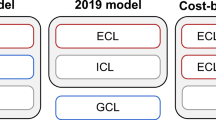Abstract
Many instructional designers and numerous organizations have adapted the Dick and Carey model for use in their training functions. This article reviews the changes that have occurred to the model in the 20 years since its original publication, and identifies various influences that may determine whether it will continue to be useful in the years ahead. Consideration is given to alternative instructional design textbooks and the potential decline in interest in instructional design within academic programs. The influence of constructivist theory on the 1996 version of the Dick and Carey model is described, and the long term impact of constructivist and objectivist models on public education and business and industry is assessed.
Similar content being viewed by others
References
Dick, W. (1993). Quality in training organizations.Performance Improvement Quarterly, 6(3), 35–47.
Dick, W. & Carey, L.M. (1978, 1985, 1990, 1996).The systematic design of instruction. (editions 1 through 4.) New York: HarperCollins.
Kaufman, R. (1991).Strategic planning plus. Newbury Park, CA: Sage Publications.
Kirkpatrick, D. (1987). Evaluation. In R.L. Craig (ed.),Training and development handbook, (3rd ed.). New York: McGraw-Hill.
Rosenberg, M. (1990). Performance technology working the system.Training, 27(2). 42–48.
Rossett, A. (1987).Training needs assessment. Englewood Cliffs, NJ: Educational Technology Publications.
Seels, B., & Glasgow, Z. (1990).Exercises in instructional design. Columbus, OH: Merrill.
Smith, P.L., & Ragan, T.J. (1993).Instructional design. New York: Macmillan.
Tessmer, M., & Harris, D. (1992).Analyzing the instructional setting. London: Kogan Page.
Wedman, J., & Tessmer, M. (1993). Instructional designers' decisions and priorities: A survey of design practices.Performance & Instruction, 6(2). 43–57.
Willis, J. (1995). A recursive, reflective instructional design model based on constructivist-interpretivist theory.Educational Technology, 30, Nov–Dec, 5–23.
Zemke, R., & Kramlinger, T. (1982).Figuring things out: A trainer's guide to needs and task analysis. Reading, MA: Addison-Wesley.
Author information
Authors and Affiliations
Rights and permissions
About this article
Cite this article
Dick, W. The dick and carey model: Will it survive the decade?. ETR&D 44, 55–63 (1996). https://doi.org/10.1007/BF02300425
Issue Date:
DOI: https://doi.org/10.1007/BF02300425




